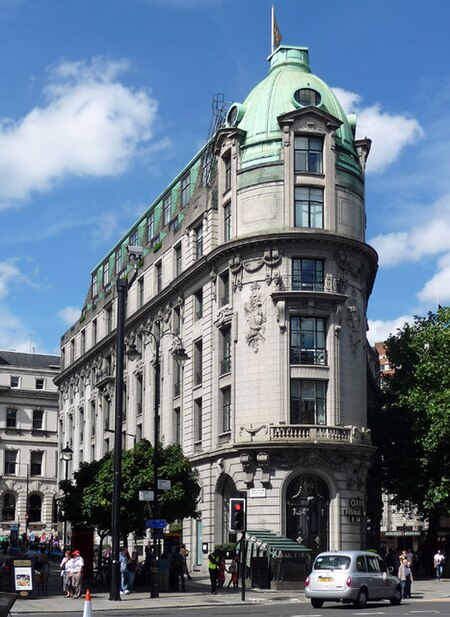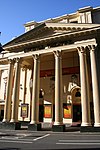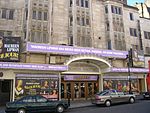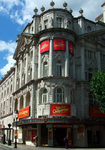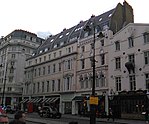The Gaiety Theatre was a West End theatre in London, located on Aldwych at the eastern end of the Strand. The theatre was first established as the Strand Musick Hall in 1864 on the former site of the Lyceum Theatre. In 1868, it became known as the Gaiety Theatre and was, at first, known for music hall and then for musical burlesque, pantomime and operetta performances. From 1868 to the 1890s, it had a major influence on the development of modern musical comedy.
Under the management of John Hollingshead until 1886, the theatre had early success with Robert the Devil, by W. S. Gilbert, followed by many other burlesques of operas and literary works. Many of the productions starred Nellie Farren. Hollingshead's last production at the theatre was the burlesque Little Jack Sheppard (1885–86), produced together with his successor, George Edwardes. Edwardes's first show, Dorothy, became a long-running hit. In the 1880s and 90s, the theatre had further success with a number of burlesques with original scores by the theatre's music director, Wilhelm Meyer Lutz, including Faust up to Date (1888), Carmen up to Data (1890) and Cinder Ellen up too Late (1891).
In the 1890s, the theatre introduced new style of musical theatre in London now referred to as the Edwardian musical comedy. These shows employed female dancers known as the Gaiety Girls and were extraordinarily popular, inspiring imitations at other London theatres. A success in this genre was The Shop Girl (1894), which was followed by many "girl"-themed musicals. The building was demolished in 1903, and the theatre was rebuilt at the corner of Aldwych and The Strand. More hit musicals followed. When Edwardes died in 1915, Robert Evett, took over the management of the theatre and had a number of further successes, notably Theodore & Co (1916) and Going Up (1918). By 1939 and in need of refurbishment, the theatre closed and stood empty during World War II. The building suffered extensive bomb damage during air raids and stood empty until it was demolished in 1956.
